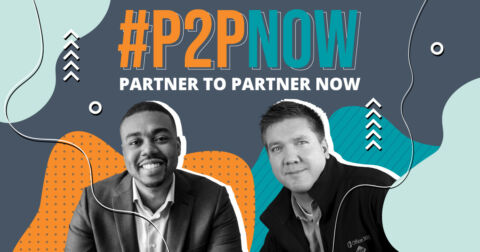While it’s ideal to build a vendor service practice with a vendor you’re familiar with, how can you know when the time is right to take the plunge? Creating a whole practice around a vendor’s solutions is a massive investment, after all.
In this episode of P2PNow, we’re going to help you answer this question. From service enablement training to a lead sharing system, read on to learn what a vendor can provide to ensure you’ll be successful when building out a practice around their solutions. Watch the session below or read on for a full transcript!
Transcription
Christian: This week’s question is “Should you build a Vendor Service Practice?”
Sam, it seems like an obvious answer – “Yes!” Assuming your organization has decided to already work with this vendor. But is it really that simple?
Sam: Of course, it’s not that simple! That’s why we’re here talking about it. So you’ve decided to work with a vendor. That now means you have access to their solutions. But that doesn’t mean you should create an entire practice around it.
There are three things a vendor can provide to make sure you’re successful if you’re building out a practice.
Christian: That’s correct. They should provide you – Service Enablement Training, a Packaged Go To Market strategy, and a Lead Sharing system.
Sam: Absolutely, let’s start with Service Enablement Training. Most vendors will provide some level of technical training for their solutions.
What you’re looking for is “Delivery” or “Deployment” training. This will ensure your teams have the skills they need in a customer environment to be successful in the field. These sessions should dive deeper into best practices during a delivery and troubleshooting tips to address issues during a project.
Christian: That training will be the foundation for building out the expertise you need to be successful.
The next point will be the Go To Market or “GTM” Strategy (technically we skipped the “Better Together Story” step). Assuming you know the value of your two orgs, the GTM Strategy is the execution plan. The vendor should have a big influence in assisting with the development of those materials. These could be pre-made based on the solution you’re using or they could be customized. That decision will most likely be based on your potential market impact on a partner.
Sam: Finally, the key Lead Sharing system. This is really a cherry on top. Not all venders have a program that’s easily accessible. If they do have one, you can anticipate there being some qualifications to run through.
The general idea is that the vendor may source opportunities for customer delivery projects. Then have a system in place to distribute those projects to partners.
Christian: With these three components you can confidently say that building out that Service Practice would be a good investment. You’ll have the training to be successful, the ability to source business, and have supplemental opportunities from the vendor.
Sam: That’s right. At the end of the day building out a practice is a lot of effort. We’re talking about websites, collateral, events, and training hours. It can become very costly and you absolutely should expect a vendor to be co-investing with you to ensure you’re successful.
Christian: Absolutely. Be sure to join AvePoint’s Partner Program at avepoint.com/partners and ask your account manager how AvePoint can help your services business grow!


